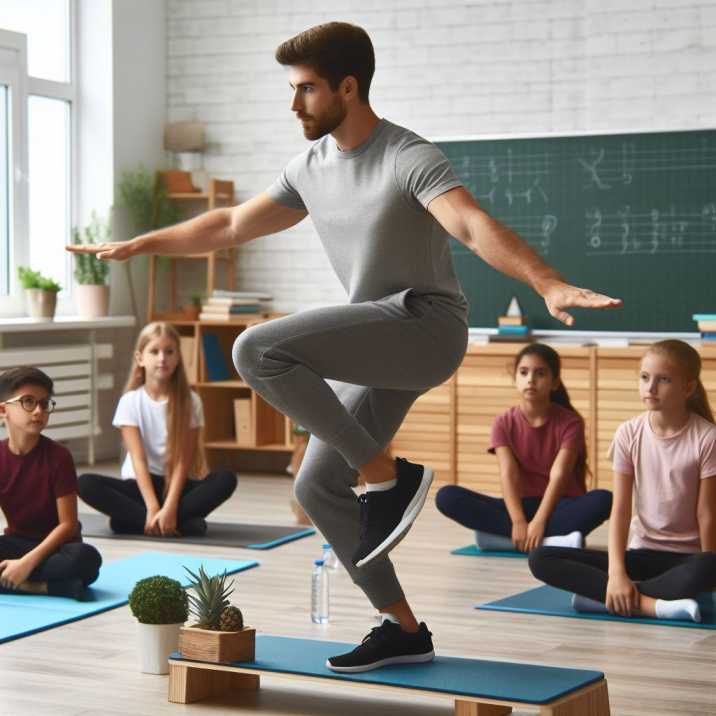The Impact of Balance Training on Academic Performance
Introduction:
Table of Contents
The Impact of Balance Training on Academic Performance
In the pursuit of academic success, students often explore various avenues to enhance their performance. While traditional methods like studying techniques and time management are well-known, one aspect that is gaining attention is the impact of balance training on academic performance. This article delves into the The Impact of balance training on academic performance, exploring its benefits, scientific backing, and practical implications for students of all ages.
Understanding Balance Training:
Balance training encompasses a range of exercises designed to improve stability and equilibrium. These exercises target the body’s core muscles, enhancing coordination, proprioception, and overall balance. While traditionally associated with athletic performance and injury prevention, balance training’s benefits extend far beyond the realm of sports.

The Science and The Impact of Balance Training on Academic Performance :
Several studies have investigated the relationship between physical activity, including balance training, and academic performance. Research published in the Journal of School Health found a positive correlation between physical fitness and academic achievement, highlighting the importance of incorporating physical activity into educational settings.
Balance training specifically contributes to cognitive function through various mechanisms. First, it stimulates the vestibular system, which plays a crucial role in spatial orientation and balance. By challenging the vestibular system, balance training enhances cognitive processes associated with spatial awareness, which is essential for tasks such as reading maps and solving geometry problems.
Additionally, balance exercises engage multiple sensory systems, including proprioception and vision. These sensory inputs are integrated in the brain’s cerebellum, contributing to improved coordination and motor skills. Enhanced motor skills, in turn, support activities requiring fine motor control, such as writing and drawing, thereby indirectly benefiting academic performance.
Benefits of Balance Training on Academic Performance:
The incorporation of balance training into academic environments offers numerous benefits for students:
Improved Focus and Attention:
Balance exercises require concentration and focus to maintain stability. Regular practice enhances attentional control, allowing students to sustain focus during lengthy study sessions.
Enhanced Memory Retention:
Physical activity, including balance training, has been shown to improve memory retention and retrieval. The increased blood flow and oxygen delivery to the brain during exercise facilitate neuroplasticity, the brain’s ability to adapt and form new connections.
Stress Reduction:
Engaging in physical activity, such as balance training, reduces stress levels by promoting the release of endorphins, the body’s natural mood elevators. Lower stress levels contribute to improved cognitive function and academic performance.
Better Posture and Ergonomics:
Balance training strengthens core muscles, leading to better posture and spinal alignment. Improved posture reduces the risk of musculoskeletal issues associated with prolonged sitting, promoting overall well-being during study sessions.
Increased Confidence:
Mastering balance exercises boosts self-confidence and self-efficacy, translating into a positive mindset towards academic challenges. Confidence plays a vital role in academic success, empowering students to tackle difficult tasks with resilience.
Practical Implications and Recommendations:
Incorporating balance training into daily routines can significantly impact academic performance. Here are some practical recommendations for students, educators, and parents:
- Student Engagement: Encourage students to participate in balance training activities during physical education classes or as part of extracurricular programs. Incorporating balance exercises into classroom breaks can also enhance student focus and attention.
- Educator Awareness: Educators play a pivotal role in promoting physical activity and overall well-being among students. Awareness campaigns highlighting the benefits of balance training can encourage schools to integrate such activities into their curriculum.
- Parental Support: Parents can support their children’s academic success by incorporating balance training into family activities. Simple exercises like standing on one leg while brushing teeth or balancing on a stability ball while watching television can promote balance and coordination.

Conclusion:
Balance training offers a holistic approach to enhancing academic performance by integrating physical activity with cognitive development. From improving focus and memory retention to reducing stress levels, The Impact of balance training on academic performance. By incorporating balance exercises into daily routines, students can unlock their full academic potential and cultivate lifelong habits for success.
Frequently Asked Questions (FAQs):
- How does balance training improve academic performance? Balance training enhances cognitive function by stimulating sensory systems and improving coordination, focus, and memory retention.
- Can balance training benefit students of all ages? Yes, balance training is beneficial for students of all ages, from elementary school to university level.
- How often should balance training be incorporated into a student’s routine? Ideally, students should engage in balance training exercises for at least 20-30 minutes, 2-3 times per week.
- Are there specific balance exercises recommended for students? Balance exercises such as standing on one leg, using a balance board, or practicing yoga poses can effectively improve balance and coordination.
- Can balance training replace traditional studying techniques? Balance training complements traditional studying techniques by enhancing cognitive function and overall well-being. It is not a substitute but a valuable addition to academic routines.
- Are there any safety considerations when engaging in balance training? Students should always perform balance exercises under supervision, especially when using equipment like balance boards or stability balls. Proper warm-up and cool-down routines are also important to prevent injuries.


